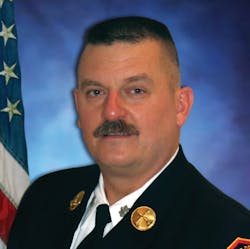Some recent commercials on TV caught my eye and, actually, are funny, too. After seeing a few of the commercials, it occurred to me that the phrase that’s used in them—Just OK Is Not OK—applies perfectly to the fire service.
If you look up “OK” in a dictionary, you could find: managing adequately, acceptable, unremarkable and tolerable. There are more, but you get the drift. The real question: Is that the kind of firefighter, officer or chief that you want to be? Is that the kind of company or department that you want to be a part of? The obvious answer to that question: No. Let’s take a look at all of the things that should be better than OK.
‘Acceptable’ training?
When a firefighter from another department asks you what kind of training that you get at your firehouse, do you answer, “Acceptable?” If you did give that answer, is that acceptable? The answer: Absolutely not!
As has been stated many times, good, effective training is the backbone of a good fire company. And good effective training needs to be a few more things as well.
Company-level training needs to be regular and frequent. That means all of the time. If you’re a career firefighter, every time that you’re on duty, training should be provided. If you’re a volunteer, training should be weekly, at a minimum. Start training regularly, and you’ll notice a measurable difference in your performance of tactical assignments. Regular and frequent!
‘Tolerable’ equipment?
What else needs to be better than OK? How about the condition of the apparatus, tools and equipment in the firehouse? I’m not suggesting that you need all new apparatus or any new apparatus. But the rig that you respond on should be in shipshape. An old rig can be an excellent rig. I’ve seen 30-year-old apparatus that looked and performed like a 5-year-old machine.
Next, of course, are hand tools. Dirty or damaged hand tools are unacceptable. Yes, after a fire, the tools should be inspected and wiped clean, and at the start of the next shift, a full cleaning and rehab should be conducted. Nothing is more important to firefighters than their tools, and the condition of those tools is an indication of what the firefighters think of them. Your tools will take care of you if you take care of them.
‘Unremarkable’ attitude?
Would you describe your on-duty attitude as “OK?” I hope not. The attitude of the firefighters who respond on an apparatus to any type of incident plays a major role in the performance level that’s displayed. You don’t put a positive attitude on like a pair of gloves. Your on-duty attitude is something that you should work on all of the time. Officers should spend time developing a positive team attitude with their crew or company, and chiefs should develop the attitude of their company officers. When friends or family members stop by your firehouse for a visit, they should be impressed with the positive attitude that’s displayed by the entire crew. Positive attitudes also dramatically improve the ability of the crew to work together and to perform well. A final note on attitudes: They are contagious!
Finally, about the physical plant at the firehouse: Note that the word firehouse contains the word “house.” The firehouse isn’t a garage. It’s your home when on duty, when attending drills or when participating in functions. The firehouse should be maintained and treated in the way that you treat your own home. Of course, it isn’t your home, but when every firefighter and officer who works or volunteers in a firehouse treats the place with respect and helps to maintain it, the place does start to feel a lot more like home. Being asked to clean a bathroom, sweep a floor or wipe up a fuel leak isn’t a punishment but, rather, a chore that helps to keep the firehouse more like a home than a garage.
About the Author
John J. Salka Jr.
Battalion Chief
JOHN J. SALKA JR., who is a Firehouse contributing editor, retired as a battalion chief with FDNY, serving as commander of the 18th battalion in the Bronx. Salka has instructed at several FDNY training programs, including the department’s Probationary Firefighters School, Captains Management Program and Battalion Chiefs Command Course. He conducts training programs at national and local conferences and has been recognized for his firefighter survival course, “Get Out Alive.” Salka co-authored the FDNY Engine Company Operations manual and wrote the book "First In, Last Out–Leadership Lessons From the New York Fire Department." He also operates Fire Command Training, which is a New York-based fire service training and consulting firm.

